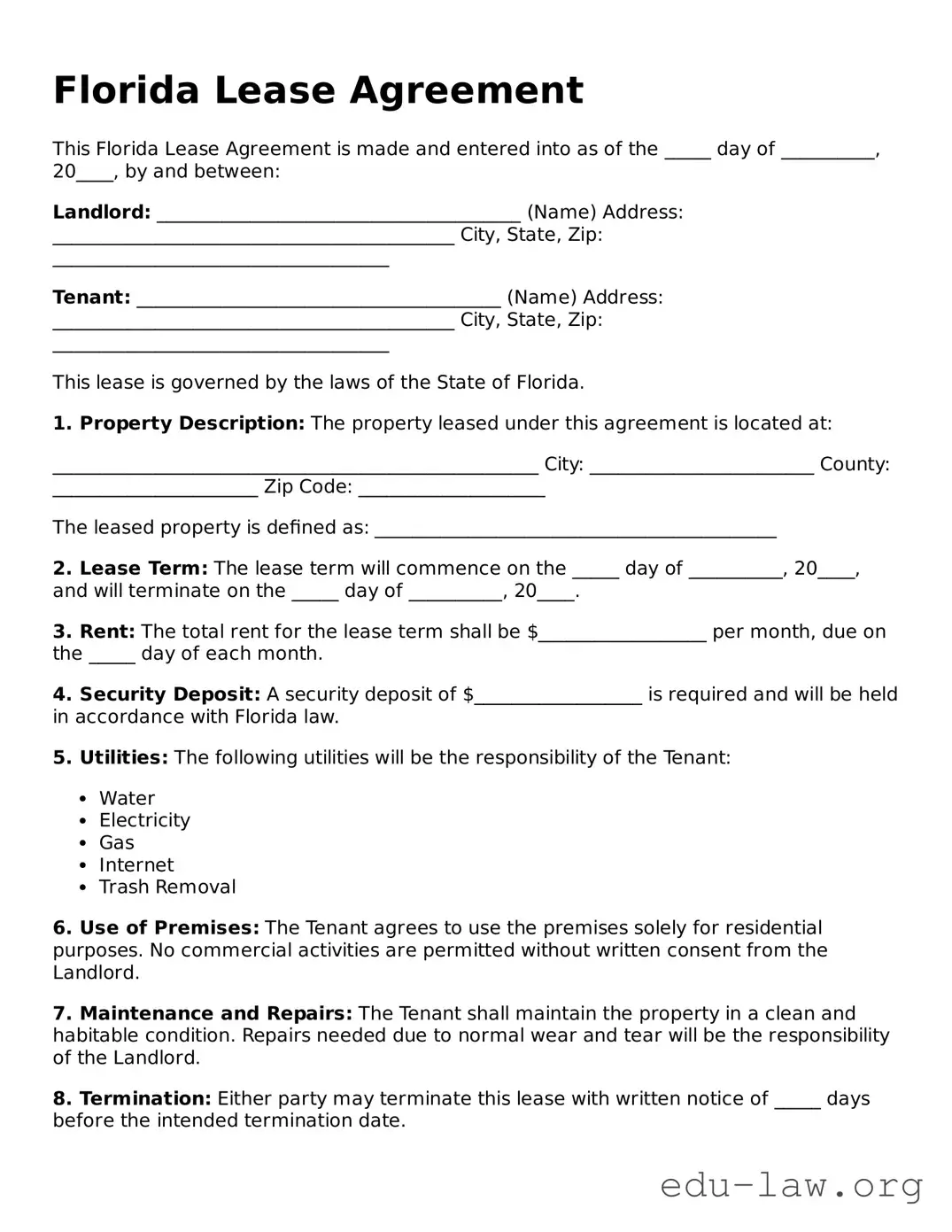Florida Lease Agreement
This Florida Lease Agreement is made and entered into as of the _____ day of __________, 20____, by and between:
Landlord: _______________________________________ (Name)
Address: ___________________________________________
City, State, Zip: ____________________________________
Tenant: _______________________________________ (Name)
Address: ___________________________________________
City, State, Zip: ____________________________________
This lease is governed by the laws of the State of Florida.
1. Property Description:
The property leased under this agreement is located at:
____________________________________________________
City: ________________________
County: ______________________
Zip Code: ____________________
The leased property is defined as: ___________________________________________
2. Lease Term:
The lease term will commence on the _____ day of __________, 20____, and will terminate on the _____ day of __________, 20____.
3. Rent:
The total rent for the lease term shall be $__________________ per month, due on the _____ day of each month.
4. Security Deposit:
A security deposit of $__________________ is required and will be held in accordance with Florida law.
5. Utilities:
The following utilities will be the responsibility of the Tenant:
- Water
- Electricity
- Gas
- Internet
- Trash Removal
6. Use of Premises:
The Tenant agrees to use the premises solely for residential purposes. No commercial activities are permitted without written consent from the Landlord.
7. Maintenance and Repairs:
The Tenant shall maintain the property in a clean and habitable condition. Repairs needed due to normal wear and tear will be the responsibility of the Landlord.
8. Termination:
Either party may terminate this lease with written notice of _____ days before the intended termination date.
IN WITNESS WHEREOF, the parties have executed this Florida Lease Agreement as of the date first above written.
Landlord's Signature: ___________________________ Date: ______________
Tenant's Signature: ____________________________ Date: ______________
